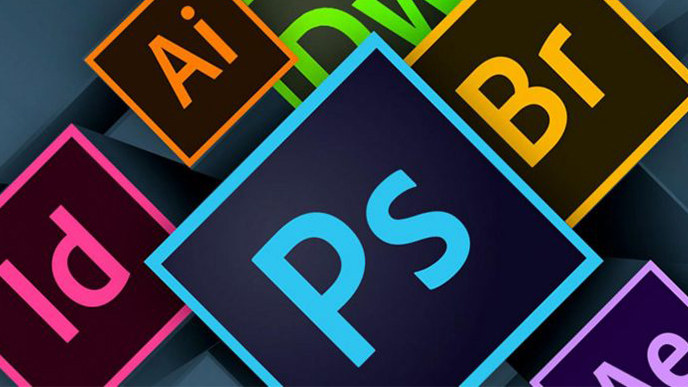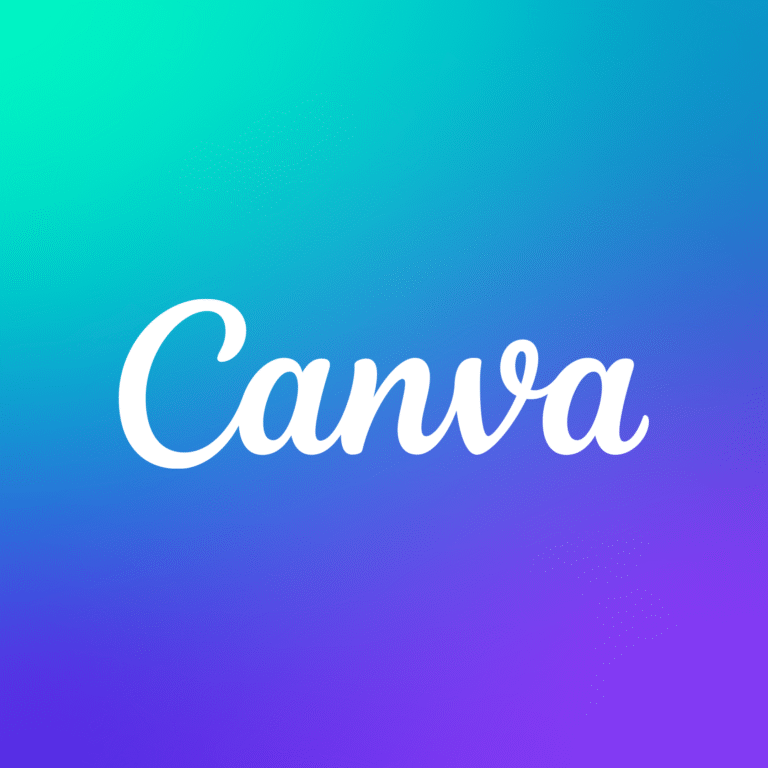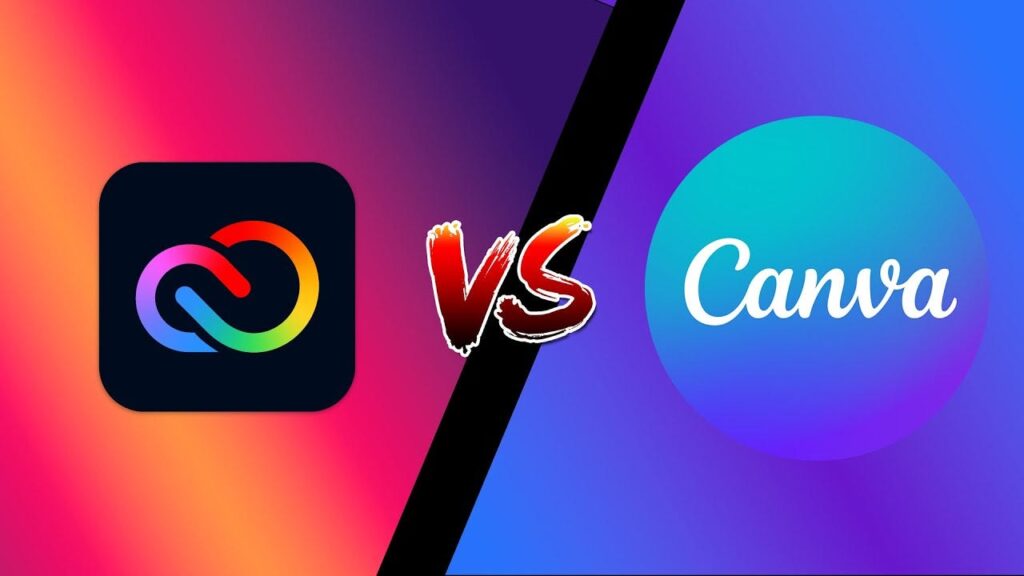Table of Contents
ToggleIntroduction
In 2025, digital marketers are increasingly asking: Adobe vs Canva – which is the best for digital marketers ? As creative content becomes the backbone of high-performing campaigns, choosing the right design platform has never been more essential. Both Canva and Adobe Express bring unique strengths to the table, but the best fit depends on your goals, experience, and workflow.
Haridarshan Chandnani, a leading voice in the digital marketing space, dives deep into this comparison—examining everything from drag-and-drop simplicity to precision design tools. Canva is widely recognized for its ease of use and speed, making it ideal for fast-paced content creation and social media campaigns. Meanwhile, Adobe and the broader Adobe suite offer professionals more control, advanced features, and premium-grade visuals.
Whether you’re a startup craving speed or an agency demanding full creative control, this guide will help you choose the right graphic design platform to elevate your marketing efforts in 2025.
Canva or Adobe Which is Best.
When it comes to digital design, one major question marketers ask is: Which is better, Adobe vs Canva for beginners? In 2025, the answer largely depends on your skill level and project requirements. For those just starting out, Canva has become the go-to design platform. Its drag-and-drop interface, pre-built templates, and simple learning curve make it ideal for new marketers or small businesses. In contrast, Adobe products like Photoshop or Illustrator require more technical knowledge. However, they offer advanced tools and flexibility unmatched by most platforms. While Adobe might seem intimidating for beginners, it’s still a top-tier choice for marketers willing to learn and grow with the software.
Haridarshan Chandnani, a digital marketing strategist, often recommends Canva for those just entering the design space due to its efficiency and beginner-friendly tools. Still, he emphasizes that professionals should gradually transition to Adobe to unlock more creative potential. Choosing between Canva and Adobe ultimately depends on your learning goals, project complexity, and budget. For those seeking immediate results and simplicity, Canva leads. But for future-proofing your skills, Adobe offers depth. So, which is better, Canva or Adobe for beginners? Both have their place—choose based on where you are in your design journey
Adobe Tools For Digital Marketing Professionals

For seasoned professionals, Adobe tools are a must-have. Adobe Creative Cloud offers a powerful suite of applications like Photoshop, Illustrator, Premiere Pro, and After Effects. These tools provide unmatched flexibility for creating stunning visuals, high-converting ads, and engaging content across platforms.
Haridarshan Chandnani highlights Adobe’s edge in handling advanced projects that require precision, custom branding, and complex editing. Whether it’s for video production, website banners, or display ads, Adobe tools ensure every creative element is polished and on-brand.
While Canva is perfect for quick designs, Adobe dominates when it comes to layered editing, animation, and professional-grade visuals. Adobe also offer more file control, better export options, and integration with other advanced software used in the industry.
In 2025, brands aiming for top-tier visual storytelling can’t ignore Adobe’s capabilities. From photo manipulation to custom typography, Adobe’s ecosystem enables marketers to push boundaries. The learning curve may be steeper, but the payoff is high-quality, tailored content that truly stands out.
Haridarshan Chandnani believes that mastering Adobe is not just a skill—it’s a competitive advantage. For professionals serious about elevating their marketing campaigns, Adobe remains the ultimate toolkit.
Graphic Designing Tools For Marketers

The rise of visual content in marketing has made graphic design tools for marketers more essential than ever. In 2025, tools like Canva, Adobe Creative Cloud, Figma, and Visme are redefining how brands create and communicate. For marketers, choosing the right tool depends on their goals—whether it’s creating fast social media graphics or designing high-end product visuals.
Canva remains a favorite among marketers for its ease of use, collaborative features, and ready-to-use templates. It’s especially useful for quick projects, content calendars, and social media visuals. Meanwhile, Adobe dominate when creative depth and customization are needed.
According to Haridarshan Chandnani, today’s marketers need versatile graphic design tools that balance ease of use with creative control. Canva and Adobe both deliver value in different ways, depending on the campaign complexity and team expertise.
A well-rounded digital marketing strategy often combines several tools. Use Canva for speed and accessibility, Adobe for complex visuals, and tools like Figma for team collaboration. Ultimately, selecting the right graphic design tools for marketers can streamline workflow, enhance brand identity, and drive engagement.
With the right mix, your marketing visuals will not only look great—they’ll convert.
Best Design Tool for Digital Marketers in 2025
Choosing the best design tool for digital marketers in 2025 isn’t about finding the flashiest features it’s about efficiency, collaboration, and results. With so many options available, digital marketers must weigh usability, customization, and ROI when selecting a design platform. The main contenders? Canva and Adobe.
Canva continues to dominate for its ease of use, affordability, and all-in-one design templates. Marketers can create social posts, flyers, ad creatives, and presentations—all without a steep learning curve. Canva also integrates with content calendars and social scheduling tools, making it a productivity powerhouse.
On the other hand, Adobe offer unmatched creative freedom. From Illustrator to After Effects, Adobe’s toolkit is essential for those looking to create unique, professional-grade content. It may be more complex, but it delivers superior precision and quality.
Haridarshan Chandnani advises that the best tool depends on your role. Content creators, social media managers, and startup founders may prefer Canva. Creative directors and designers handling large-scale campaigns will benefit more from Adobe.
In the end, the best design tool is the one that matches your team’s needs, campaign goals, and ability to produce consistent, high-quality visuals.
Canva for Digital Marketing

Canva has revolutionized how teams create and distribute branded content. With its intuitive interface, drag-and-drop features, and massive template library, Canva empowers digital marketers to design on demand without needing advanced design skills.
Haridarshan Chandnani points out that Canva is especially effective for small businesses, solopreneurs, and growing teams who want fast, polished visuals for campaigns. From Facebook ads to email headers and even print materials, Canva simplifies the entire process.
Marketers can use Canva to maintain brand consistency by saving custom colors, logos, and font styles in a Brand Kit. Its collaboration features also allow multiple team members to work on the same design in real-time, streamlining content creation across departments.
Compared to more complex platforms, Canva is ideal for day-to-day design needs. It’s mobile-friendly, integrates with content publishing platforms, and offers an ever-expanding asset library that saves time and effort.
While Adobe remains the industry gold standard for professionals, Canva bridges the gap for those who need speed and simplicity. With smart templates and modern UI, it enables marketers to create high-converting content quickly—making it an essential tool in the 2025 digital marketing toolkit.
Conclusion
In 2025, digital marketers have more powerful tools at their disposal than ever before—but success lies in selecting the right one for your goals. Whether you’re building your brand, launching ads, or scaling campaigns, the decision between Adobe vs Canva can significantly affect your marketing output and efficiency.
For beginners, Canva offers speed, simplicity, and collaborative ease—perfect for fast-paced content creation. On the other hand, seasoned marketers seeking full creative control and advanced design capabilities will find unmatched value in Adobe’s professional suite.
As Haridarshan Chandnani emphasizes, there’s no one-size-fits-all answer. Your ideal design tool depends on your campaign demands, team skill set, and growth ambitions. Many successful marketing teams even use both—Canva for quick turnarounds and Adobe for high-impact projects.
Ultimately, the best design tool is one that aligns with your brand vision, enhances productivity, and supports long-term success. Make your choice not just for today’s needs—but for the future of your digital marketing journey.
FAQS
Canva is generally easier for beginners. It offers a drag-and-drop interface, pre-designed templates, and an intuitive experience, making it ideal for new digital marketers. Adobe, while more powerful, has a steeper learning curve and is better suited for users with design experience or those willing to invest time in learning. For quick, professional-looking graphics without much training, Canva is the better choice for beginners.
Canva can handle many day-to-day design needs like social media posts, flyers, and presentations, making it a great alternative for digital marketers. However, Adobe offers deeper customization, advanced editing tools, and professional-grade outputs essential for complex campaigns. While Canva is perfect for quick turnarounds, Adobe remains irreplaceable for high-end, custom, and detailed designs in larger projects.
Yes, Adobe Creative Cloud subscriptions are generally more expensive compared to Canva’s pricing plans. Adobe offers extensive features and professional software like Photoshop, Illustrator, and Premiere Pro. Canva, on the other hand, has affordable plans and even a free version with impressive capabilities. The choice between the two often comes down to budget, project needs, and expected design complexity.
Adobe’s main advantages are its precision, flexibility, and professional-grade output. Tools like Photoshop and Illustrator allow marketers to create custom designs from scratch, manipulate images at a pixel level, and maintain full control over every design element. For video production, animation, and complex graphic needs, Adobe’s suite offers unmatched creative freedom, perfect for brands looking for unique and high-quality content.
Canva benefits digital marketers by making design accessible and quick. It saves time with pre-made templates, brand kits, and team collaboration features. Canva also integrates with social media platforms and content management tools, streamlining the publishing process. For marketers focused on speed, brand consistency, and ease of use without needing advanced design skills, Canva is a highly effective tool.
It depends on the agency’s needs and client expectations. Agencies that prioritize fast delivery and social media content might prefer Canva for its efficiency. However, agencies offering premium branding, high-end visuals, or specialized creative services should use Adobe to maintain a professional standard. Many agencies use both: Canva for quick tasks and Adobe for major design projects.
In 2025, both platforms will continue to serve different needs. Canva will likely remain the best choice for rapid, everyday marketing designs, especially for small businesses and content creators. Adobe will continue to be the go-to for marketers demanding custom, polished, and complex creatives. A smart digital marketer in 2025 should be familiar with both to adapt to various project demands.


